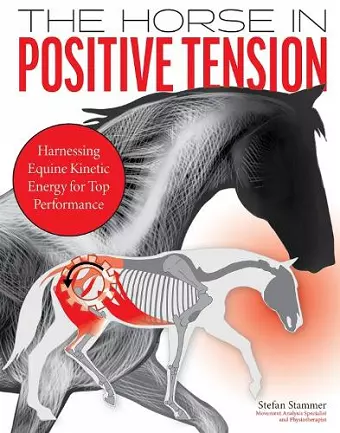The Horse in Positive Tension
Harnessing Equine Kinetic Energy for Top Performance
Format:Hardback
Publisher:Trafalgar Square
Published:14th Jul '23
Should be back in stock very soon

Everything you know about riding and the horse's movement isn't what you think it is! Did you know that: - On a functional level, traditional ways of teaching rider position and horse movement do not actually work with the biomechanical system that is horse and rider? - Use of the inside rein does not encourage the horse to bend to the inside? - Training exercises and lessons that claim to be simple cannot be as easily applied as it might seem? In these pages, physical therapist and equine movement specialist Stefan Stammer uses a startlingly unique collection of color illustrations to make movement patterns in the horse visible to the human eye, in order to help riders better understand the principles of energy and motion happening within the horse. By forming new mental images for the rider, Stammer's goal is to profoundly impact the rider's daily work with her horse so that it is harder for her to make common mistakes or interfere with the horse's natural mechanisms. With his hind end as his engine, the horse generates kinetic energy (the energy his body possesses due to its motion). For optimal movement and performance, this energy should flow through the horse's body to the horse's mouth, where it is fine-tuned with the rein aids before cycling back to the hind end. However, this movement flow is often unintentionally disrupted on its way through the horse by the rider. When, however, the cycle of kinetic energy within the horse is supported through the correct understanding and application of biomechanics-the mechanical laws relating to his and his rider's movement and structure-the outer shape of horse and rider together achieve "positive tension." This is the rhythmic stimulation of all the neuromuscular functions necessary to perform harmoniously and at peak ability. Most importantly, once the rider understands the basic principles of the biomechanics of a horse in movement, her "feeling" in the saddle will improve. Better "feel" is an integral building block for the small and subtle steps of progress, which should accompany a rider for her entire life with horses. This smart, fascinatingly composed book is for any horseperson looking to limit riding and training mistakes, grow an understanding of how the horse best functions, and optimize equineability and performance.
ISBN: 9781646011292
Dimensions: unknown
Weight: unknown
192 pages